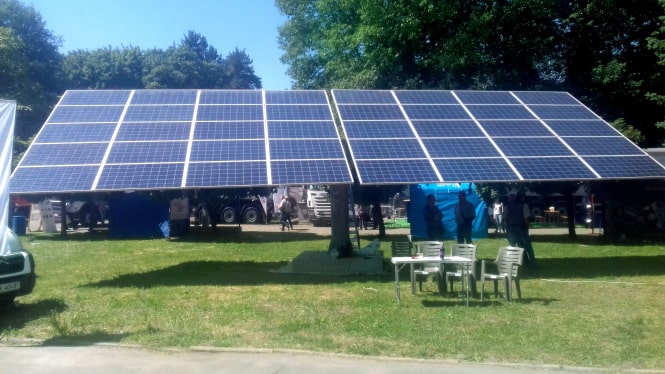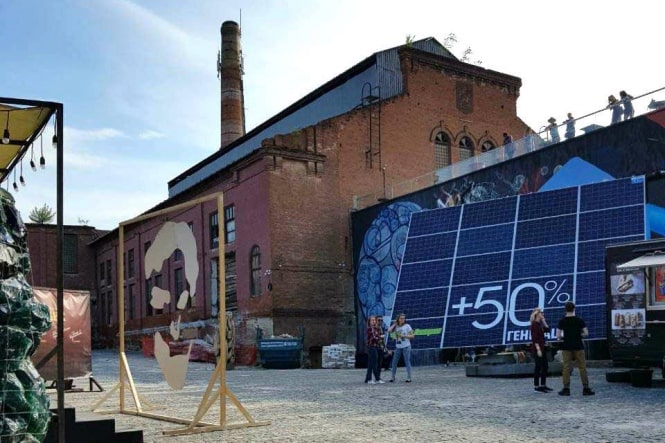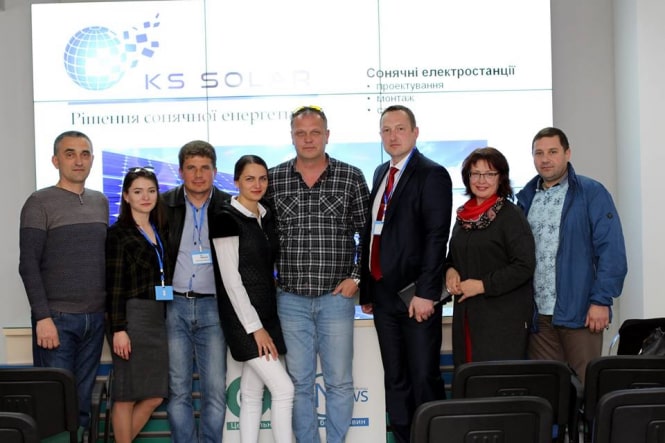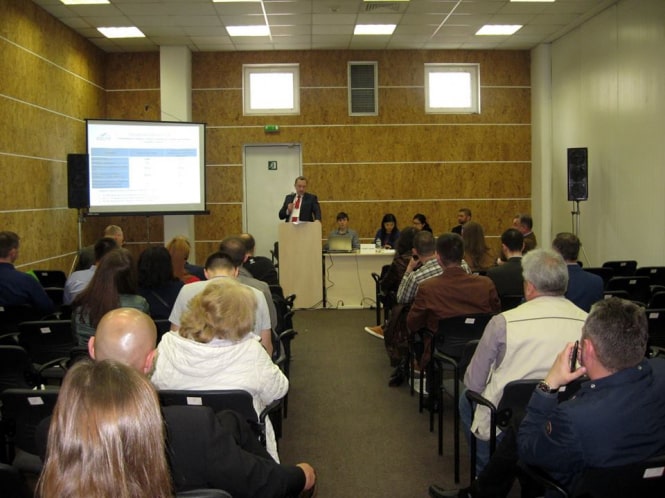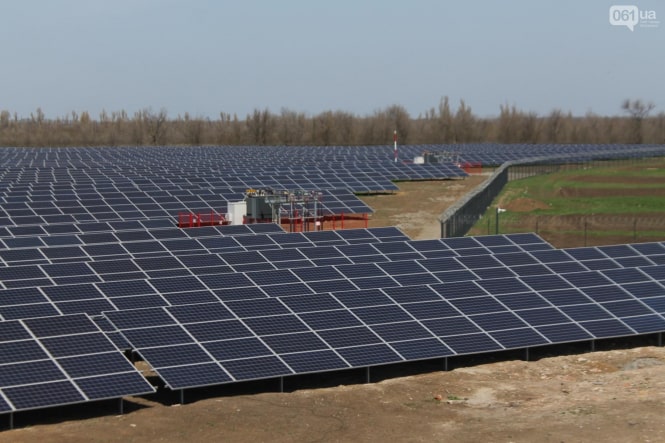Single-axis solar trackers increase the power plant efficiency by 15 - 17%
01 October 2017
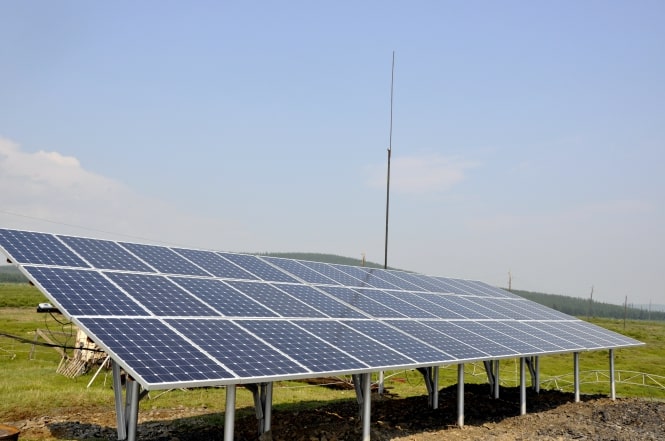
Today, many foreign and domestic companies offer various design solutions for the installation of photovoltaic modules within a wide price range. From the proposed diversity of mounting systems, it is possible to define the two main groups - static and dynamic. Static systems provide installation of PV modules and orientation to the south at a certain inclination angle (depending on the region) Dynamic systems (trackers) provide automatic orientation of solar panels along towards the horizon, towards azimuth (direction to the sides of the world) and introduced on the market as single-axis and double-axis systems.
In this newsletter, we will consider uniaxial dynamic FEM fastening systems and the efficiency of their use both in the conditions of industrial SES operation and for small home SES.
There are two main ways of systems positioned operation with a change of the PV array's angle:
- operation along the meridian axis (East-West system);
- operation along the parallel axis (North-South system).
The system can be installed with various types of control systems:
- passive control systems (astronomical) set the PV array in the programmed position according to the calendar, while the sun position and irradiation analysis is not performed.
- active control systems perform the sun position and irradiation analysis with the help of a sun irradiation sensor and install the PV array in the direction of the brightest sun point.
- combined systems are used to improve the solar trackers' reliability. In a routine mode, the system operates according to the active system algorithm. In the event of the sun irradiation sensor's failure, the system switches to the passive operation mode. When the wind load exceeds the certain values, the control system sets the PV array to the feathering mode (the position of the least resistance to the wind flow).
The above listed control systems imply a change in the angle of PV array orientation using appropriate mechanisms, for example, by using the electromechanical linear actuator in the construction that drives the PV array, thus changing the angle. In fact, the above-described systems are single-axis solar trackers that analyzing the sun position and irradiation set the PV array in the most energy-efficient direction.
Some companies offer PV mounting systems without mechanization that is a change in the PV array orientation angle is carried out manually. Typically, these systems are oriented along the parallel axis (North-South system) and designated to change the angle of PV array orientation, depending on the height of the sun above the horizon. It is assumed that the angle will vary from minimum twice (winter / summer) to 3-4 times (winter / spring-autumn / summer) a year that is the change in the PV array position occurs due to the change of the seasons. Theoretically, this decision is feasible, since as per calculation, such system should give 4-5% gain to the annual solar power plant generation. However, is this the case in practice?
We propose to consider the nuances to be taken into account by the potential investors when deciding on the choice of a particular PV mounting system with an identical installed capacity.
1. Dynamic PV mounting system with manually adjustable seasonal inclination angle.
- by 27% will increase the required area for a solar power plant with respect to the static system;
- by 25% will increase the cost of such system compared to the static one;
- the costs of system maintenance will increase (4 people change the inclination angle for 2 days per 1 MW and so on 2-4 times a year).
The estimated increase in electricity generation compared to the static system is 4-5%.
2. Dynamic PV mounting system with a variable East-West inclination angle (single-axis solar tracker).
- by 30% will increase in the number of solar panels located on the site compared to the static system (the installed capacity of the solar power plant will increase). It means that if there is a deficit of the power plant area, it is more appropriate to use a single-axis tracker;
- by 5 % will increase the "green tariff" when choosing a mounting system of a domestic manufacturer;
- by 21% will increase the amount of revenue from the sale of electricity compared to the static system;
- by 19% will increase in total capital investments in the solar power plant in relation to the static system;
The estimated increase in electricity generation compared to the static system is 15 - 17%.
This article is purely instructive in nature; the choice is up to you.
Sincerely yours, LLC Ukrainian System Solar

